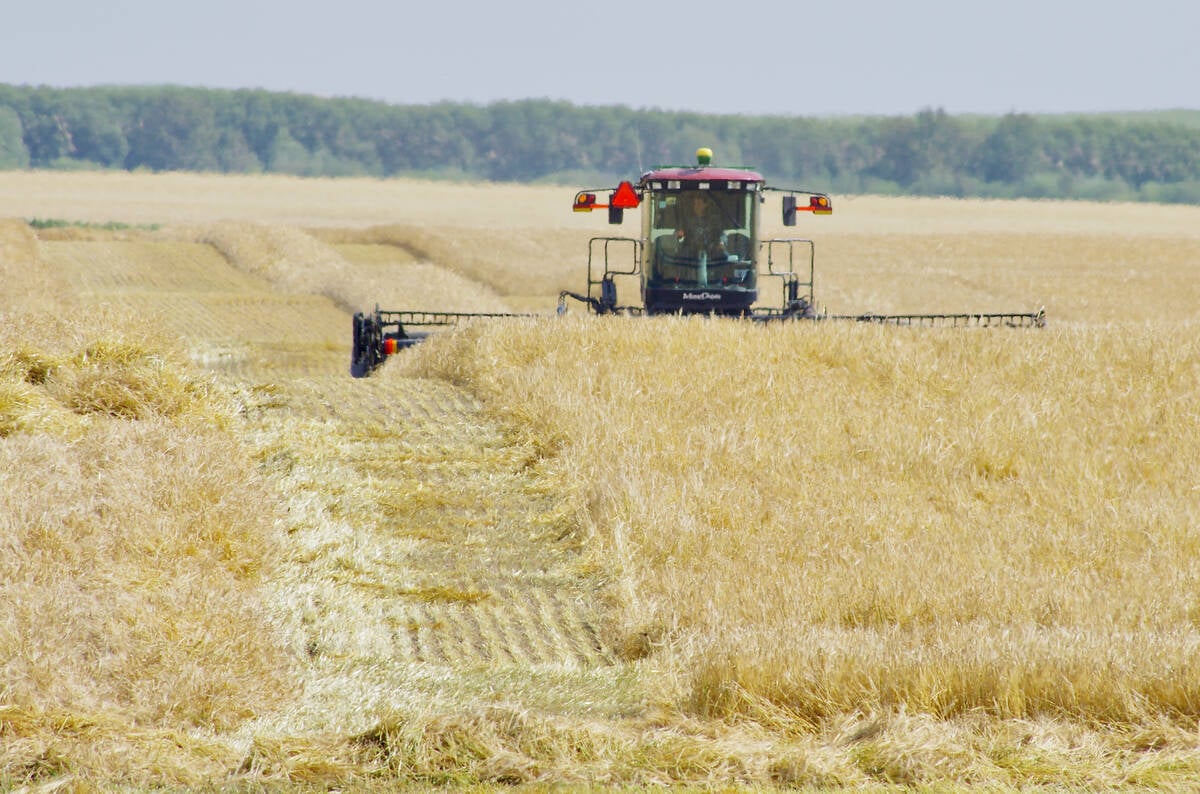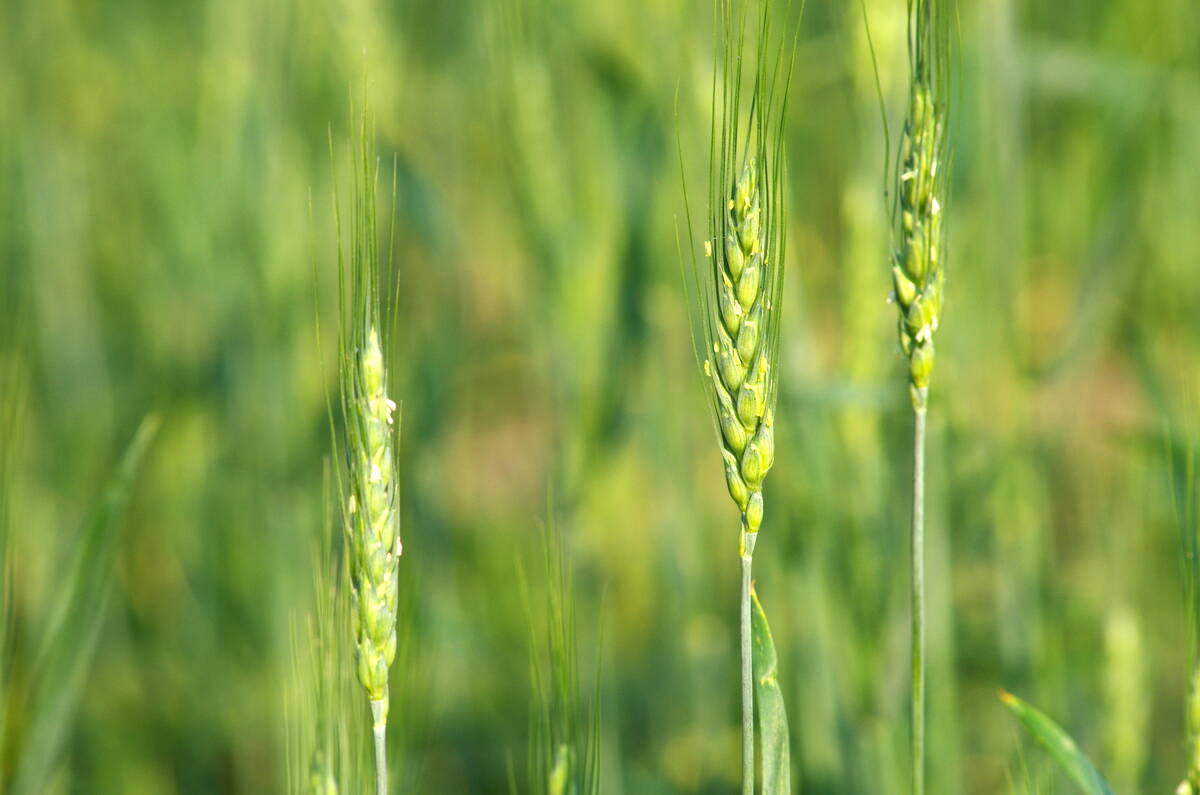Looking at a weekly chart for any of the United States wheat futures markets is much the same as looking across a southern Manitoba field — flat, flat, flat.
There may be some daily or even monthly variation, but the longer trend remains steady and rangebound. Large global supplies leave little reason for prices to move higher, while solid demand underneath the market should continue to limit the downside.
Canada
Read Also

Why drying crops in the fall is so tough
Shorter days, temperature, humidity and wind are some of the fall weather factors that play into whether or not that crop dries down
Warm temperatures and adequate moisture across much of the Prairies led Statistics Canada to raise its model-based estimate on this year’s wheat crop to 36.6 million tonnes in a report released Sept. 17. That was up by 1.1 million from the August estimate and would be the largest wheat crop since 2013.
The average all wheat yield was estimated at 51.1 bushels per acre (bu./acre), up from the 49.6 bu./acre reported in August and last year’s 50.2 bu./acre.
However, carryout supplies as of July 31 were tighter on the year, which should leave available supplies relatively steady in 2025/26 compared to 2024/25.
 Grain carts and combines hit the fields south of Darlingford to bring in the 2025 cereal harvest. Favourable growing conditions led Statistics Canada to up its Canadian wheat production numbers Sept. 17. Photo: Alexis Stockford
Grain carts and combines hit the fields south of Darlingford to bring in the 2025 cereal harvest. Favourable growing conditions led Statistics Canada to up its Canadian wheat production numbers Sept. 17. Photo: Alexis Stockford
U.S. and global
Wheat production in the U.S. was down by about 1.2 million tonnes on the year, at about 52.5 million tonnes, according to U.S. Department of Agriculture data.
However, in addition the expected Canadian increase, other major world wheat producers were also expecting more wheat in 2025/26. In its latest forecast, the USDA upped its call on the global wheat crop by nearly 10 million tonnes from August, now estimating world production at 816.2 million tonnes.
That would be up by about two per cent on the year. Notably, the USDA is forecasting Russian production to increase by 3.4 million tonnes on the year, at 85 million tonnes, with Russian exports rising to 45 million from 43 million tonnes.
The International Grains Council is calling for an even larger world wheat crop in 2025/26, coming in at 819 million tonnes in their September estimate.
Grain trade association Coceral raised its estimate for soft wheat production in the European Union and Britain to a 10-year high of 147.4 million tonnes, which would be up by 17 per cent from last year, when heavy rains hurt planting and yields.
Wheat demand ripples
Unlike canola, which is facing export hurdles to major buyer China, Canadian wheat exports are much more diverse. Exports through the first few weeks of the new marketing year held steady from 2024/25. However, there could be headwinds ahead.
The U.S. announced a trade deal with Indonesia over the summer that saw Indonesia remove tariffs on most U.S. imports. Indonesia’s flour milling association, APTINDO, also signed a memorandum of understanding with the U.S. Wheat Associates promising to double its annual purchases of U.S. wheat to one million tonnes per year.
 Canada isn’t the only country expecting a heavy wheat production year. Photo: Michael Robin
Canada isn’t the only country expecting a heavy wheat production year. Photo: Michael Robin
Indonesia was the largest buyer of Canadian wheat in 2025/26, outpacing China at 2.4 million tonnes. Losing some of that business to the U.S. wouldn’t be a major blow, but would still cut into demand.
Meanwhile, the U.S. Wheat Associates also signed an memorandum of understanding with Bangladesh in July. The country has agreed to purchase 700,000 tonnes of U.S. wheat annually for the next five years.
Bangladesh comes and goes in the Canadian market, but still bought more than one million tonnes of Canadian wheat in 2024/25.
What the market charts say
Nearby Minneapolis spring wheat futures, now traded on the MIAX platform, have held in a range from US$5.6-$6.60 per bushel for more than a year now, with the December contract holding just above the psychological US$6-mark in mid-September. Hard red winter wheat and Chicago soft wheat were both stuck trading between about US$5-$6 in the front month over the past year.
The three wheat markets are at the lower end of those long-term ranges, with seasonal signals possibly taking values off those lows over the next few months.
 The 2025 wheat crop develops in early summer in central Manitoba, despite patches of very little rain in the province at that time. Photo: Alexis Stockford
The 2025 wheat crop develops in early summer in central Manitoba, despite patches of very little rain in the province at that time. Photo: Alexis Stockford
Looking at Canadian cash prices, average bids in Manitoba are at their lowest levels of the past year — losing $50 to $60 per tonne from their June highs to trade around C$240-$260 per tonne at this harvest period. Again, seasonal price trends would typically see those prices rise into the winter months, but it could be a harder climb this year.


